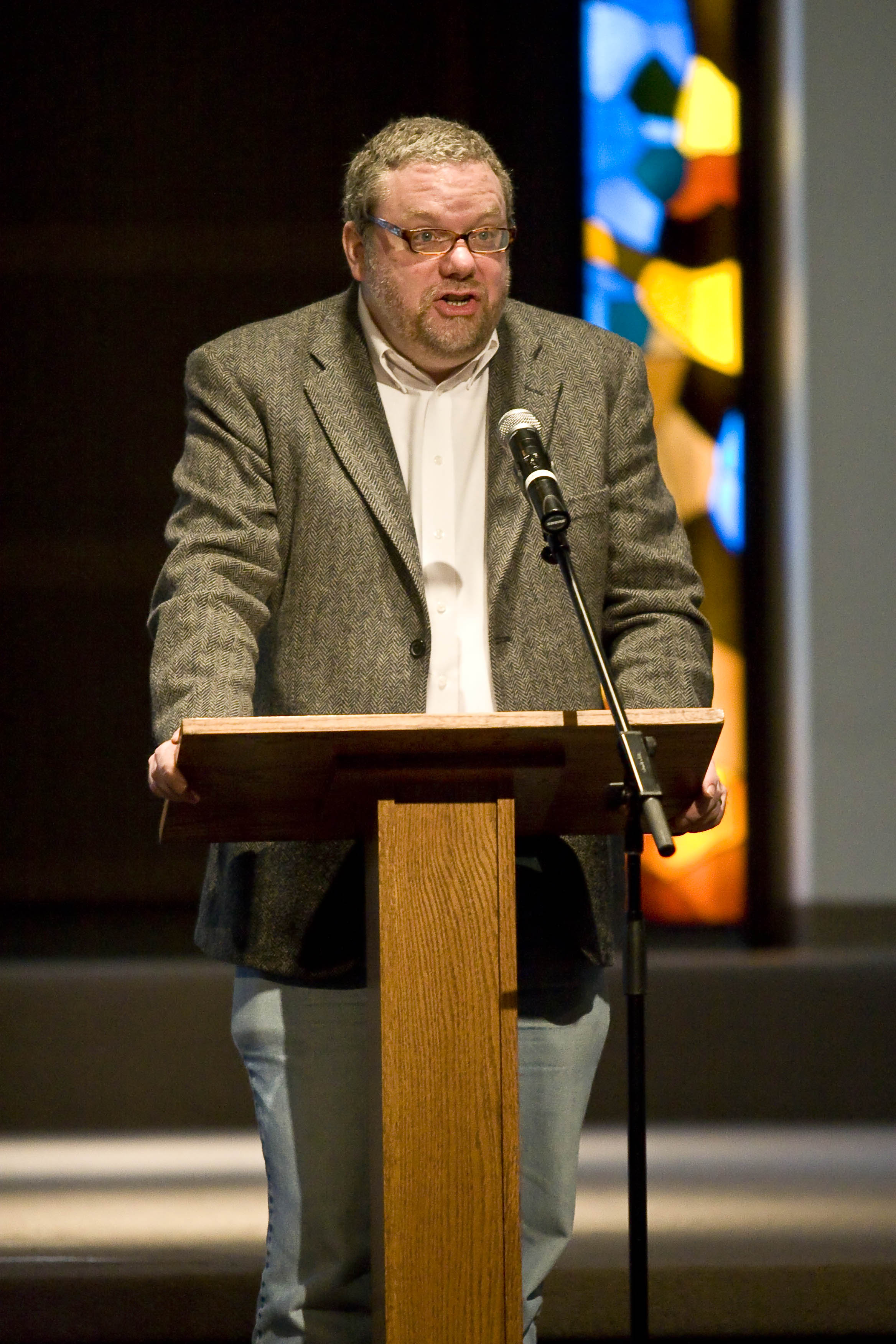The question of how culture and theology interact brought students and artists from around the region last weekend to ponder and discuss possible answers and implications.
Art students, as well as professional artists from across the country, gathered in Calvary Chapel on Friday and Saturday for the art department’s fifth annual symposium centered around the theme of Practicing Theology: Art and Culture-making in Contemporary Christianity.
The department’s goals for the event included providing a forum for artists, both Christian and non-Christian, to think and discuss about the relationship between art and faith in a contemporary context and how that relates to artists.
President Barry Corey gave the opening remarks on Saturday morning.
“The arts excel at making sense of the big, messy, incomprehensible world, and likewise, they are uniquely equipped to explore and encounter the intricacies and nuances of Christian theology,” Corey said. “This symposium, bringing together an interdisciplinary array of artists and thinkers, is a great opportunity to think through these issues together.”
Attenders heard keynote addresses from Gregory Wolfe, writer in residence at Seattle Pacific University, and James Romaine, a New York-based art historian and co-founder of the New York Center for Arts and Media Studies. Also on the agenda were panel discussions featuring professors from Biola, UCLA and Point Loma Nazarene University, as well as David Hlebo a composer and professional musician, the senior pastor of Grace Brethren Church of Long Beach, the director of Reynolds Gallery at Westmont College and the president of the C.S. Lewis Foundation.
“Our aim was to discuss and articulate compelling models for young Christian artists in the beginning of the 21st century,” Jonathan Anderson, assistant professor and symposium co-organizer, said.
Corey compared art to the Saturday between Christ’s death on Friday and resurrection on Sunday.
“So often Christians have focused on the ‘Sunday’ side of art – the art that seems to know only happiness and triumph. Or perhaps they have erred on the opposite extreme, creating ‘Friday’ art that languishes in the bleak places that have defined so much of secular contemporary art,” Corey said. “But as Christian artists who are familiar with frailty and longing, but also renewal and hope, I believe ‘Saturday’ art is a most theologically appropriate calling.”
Attendees also enjoyed a musical performance on Friday night, as well as a theatrical performance, poetry reading, film screening, and an art exhibition in the university art gallery.
The main difference between this year’s symposium and those in the previous years was the variety of art forms represented which broadened the appeal of the event to a wider range of artists, said Barry Krammes, art professor and co-organizer of the symposium.
“We had more practitioners, it wasn’t as theoretical,” Krammes said. “We tried to include other art forms – poetry, music, theatre – it wasn’t as controversial.”
The art department wants to address issues that they feel are relevant for Christians as well as non-Christians, and “people who have a foot in both,” Anderson said.
“One of the ideas that was talked about was that the only way to transform culture is to make it [culture],” Anderson said. “You can’t just discuss and analyze it.”
Krammes’ favorite part of the symposium is the way that it brings artists of different backgrounds together.
“We had professional artists, older artists mingling with student artists, people of different Christian backgrounds,” Krammes said. “We had students from Biola, USC, UCLA, and area art schools.”
Anderson and Krammes are already beginning to brainstorm ideas for themes for next year’s symposium.
“Christians are starting to do really exciting things in the arts,” Anderson said. “There are a lot of exciting things happening at Biola.”
The gallery exhibition containing art from speakers at the symposium titled “Objects of Grace” will remain in the university art gallery until Thursday, March 19.







